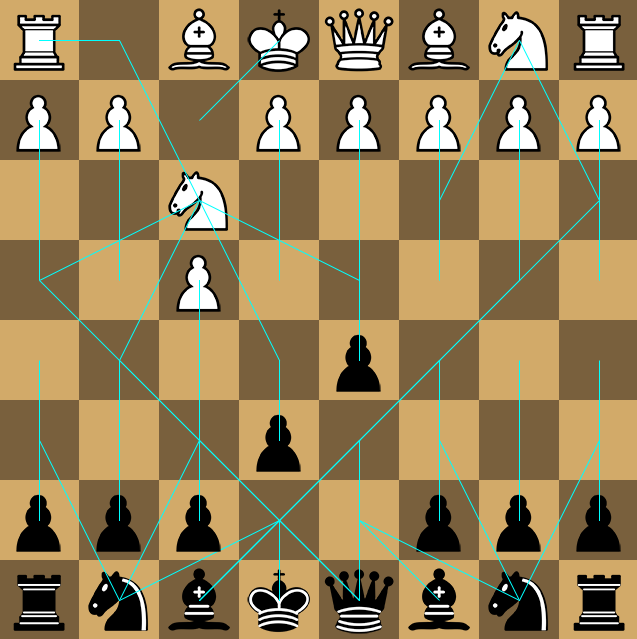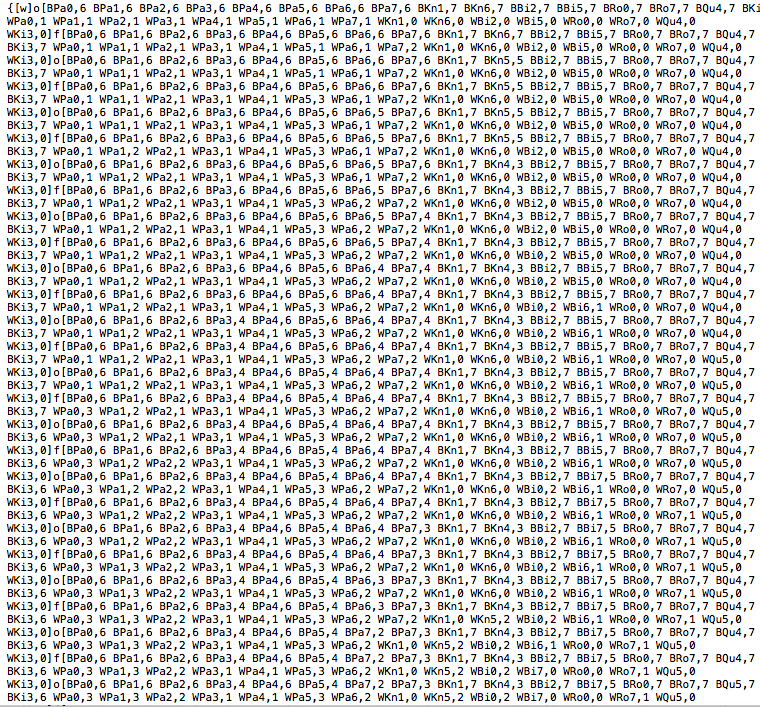The 2015 school year was when I began dabbling around AI. The idea always amazed me. Everything from movie depictions of them to the real practical uses they have in modern day life was interesting, and I wanted to know more about it.
I had been wanting to make chess for a while, as I’ve been a fan of the sport. What better way to make it than to explore simple self learning artificial intelligence at the same time? However, before getting to the AI, I first had to make the game. The idea of generating a list of possible moves was was simple enough, but the real challenge was implementing more complex moves like castling, checks, stalemates, etc.

Final game showing all possible moves.
After spending a while messing around with the game itself, time came to begin working on artificial intelligence. Having known nothing about the subject (I started learning about concepts like neural networks and genetic algorithms shortly after), I decided on a simple concept. The artificial intelligence would save all the games it had previously played and look back on them, determine the statistical probability that it would win if it did that move (based on the outcome of the games that had the same move), and decide whether or not to proceed from there. If it decided that the move was bad, it would instead do a random move and add that to the database.
There were a few errors in my method, however, that presented themselves as I neared the end of writing the program. Mainly, it would take ages before the AI became even decent at the game, because, no matter how fast it played the game, it would almost always play a new game every single iteration (Hardy’s estimate of possible chess games is roundabout 10^(10^(50)), more on the subject here), causing the file that contained all of the previous games it had played to become unbelievably massive before it became good at the game.

A fraction of a single game stored in a .txt file.
Despite all short comings, this project was still a simple and a fun introduction into the world of self-learning artificial intelligence.
Recent Comments